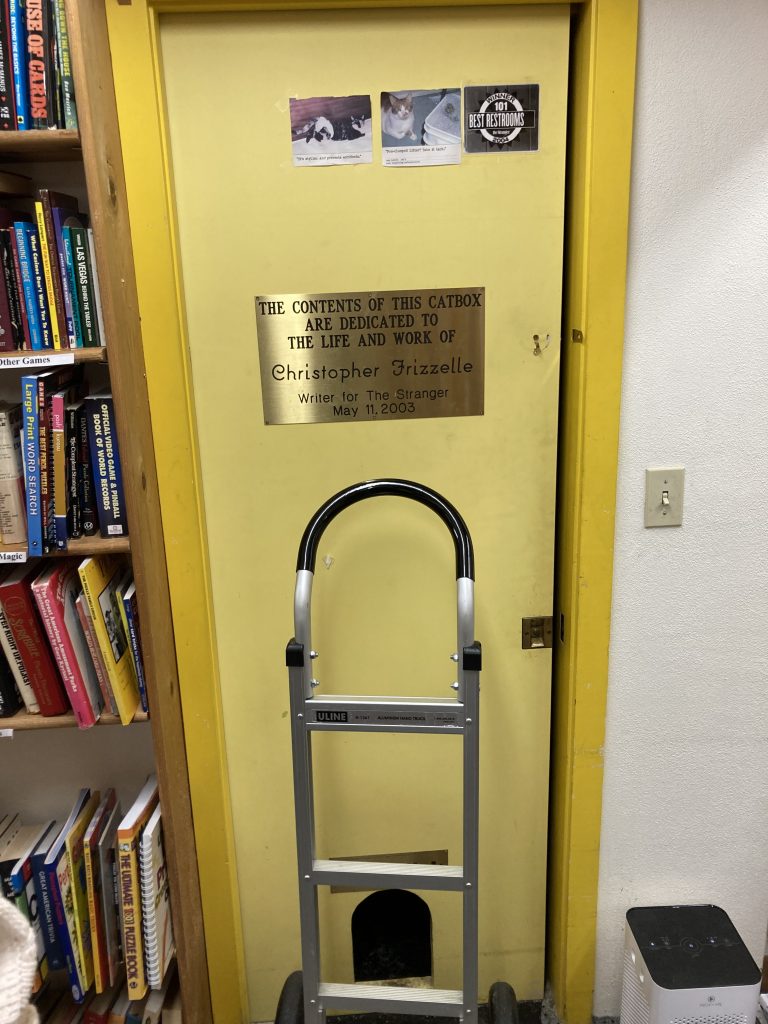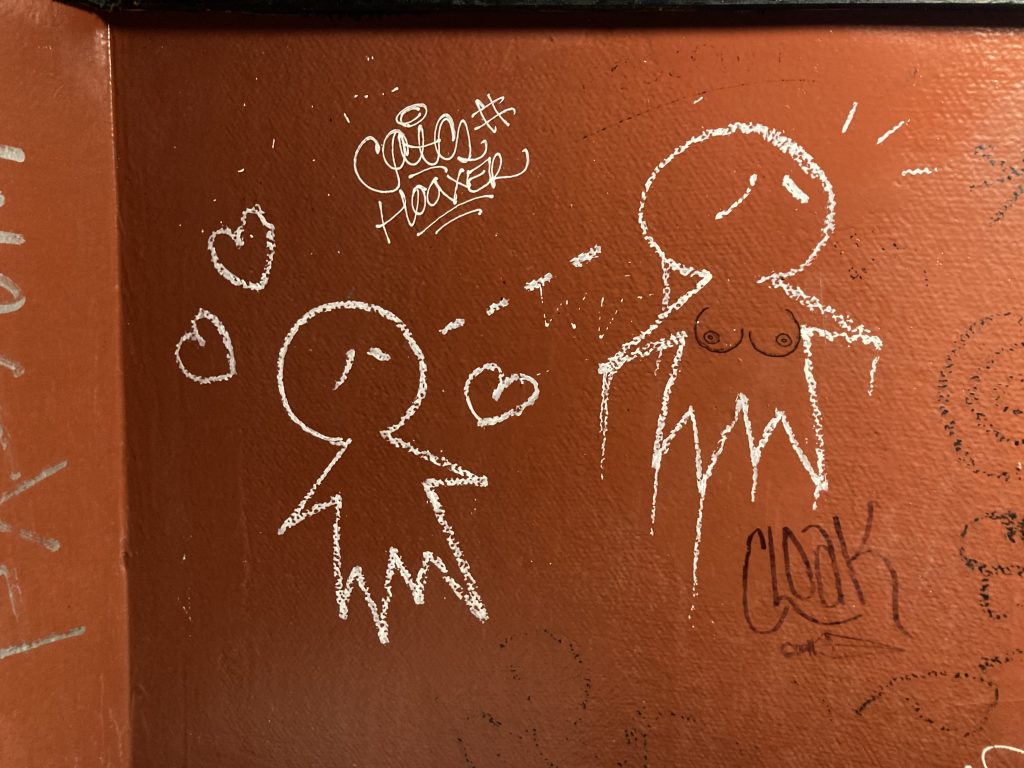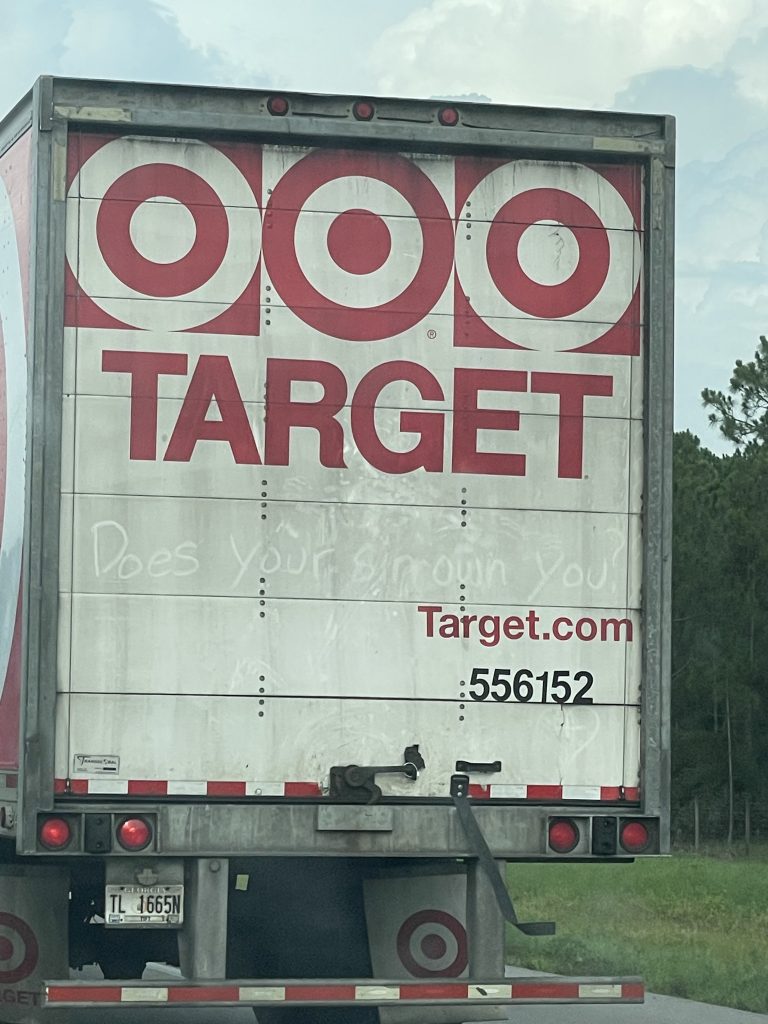My interactions with the police and other law enforcement entities have been less than ideal over the years. Some of these interactions have been covered in previous posts and those do tend to be the biggies but, speaking strictly in numbers, they represent only a fraction of the ill will I’ve accumulated in any given state. It used to be that when my budget was in the black I would rifle through my envelope of petty offenses and pay a couple off as a sign of good faith. It turns out that, past a certain limit, that sort of behavior only raises more red flags and, more importantly, alerts local governments to a person’s general whereabouts. I don’t pay tickets anymore. I don’t even keep them in an envelope. This may become an issue if I ever need to verify my credit score or take out a mortgage but practically speaking, on a day-to-day basis, it only presents a problem when a Wayside destination is government-adjacent or, in the case of ‘Planchette Airforce Base,’ so outwardly non-government as to raise suspicion.
‘A hub for UFO sightings, livestock mutilations, crashing metallic sounds, and lost time, ‘Planchette AFB’ shares a dozen qualities with New Mexico’s Area 51 but ask your local conspiracy nut about the nation’s most confounding places and ‘Planchette AFB’ won’t ever break the top 10. Why? Sheer forthcomingness in its most uncomfortable form.
‘Planchette AFB’ is chain-linked, razor-wired, and generally advertised as being off-limits by signs that cover all proper variations of ‘no trespassing’ in nearly every regional language. This has been true since its establishment in 1955. These signs were taken quite seriously until 1962 when Andrew Cabot, determined to end his life in a hail of bullets, sped toward the front gate in a pick-up truck in the clear light of day and discovered that the soldiers posted there had no intention of stopping him.
Cabot’s story prompted active explorations of the site, orchestrated mainly by members of the anti-military collective ‘Men Against War,’ which happened to be headquartered nearby. They confirmed Cabot’s claims: the soldiers at ‘Planchette AFB’ would, at most, shout at unwelcomed visitors but would never actively restrict their entry. Still, the exploration of ‘Planchette AFB’ ended up taking a long time for several reasons.
The first was simple disbelief. Despite the assurances of others, most of the ‘Men Against War’ were sure that ‘Planchette AFB’ represented a new sort of government honeypot. If trespassers weren’t already being strongarmed into bringing their fellows back to an unknown fate at the base, the soldiers were certainly keeping track of their personal details, building some sort of massive case that would see them all imprisoned in the months that followed. Cabot himself was no help in this regard. Though the brief fame seemed to distract the man from his suicidal ideations for a time, he finished the job in early 1965, hanging himself in the closet of a nearby hotel. For those already on the fence, this seemed proof enough that contact with the base was ultimately deadly.
The second factor was the complexity of the base. Though the soldiers would move to stop trespassers, several doors remained locked and several objects remained unexplained. In June 1965, for instance, members of MAW managed to break into one of the previously unentered hangars. There they discovered four 20-foot cubes, each with a perfect mirror finish and each housed as though it were an aircraft of some sort. Excitement ebbed when, after three months, nothing more could be discovered about them. They emitted no signals and sported no obvious seams. Soldiers would polish smudges from their surfaces but would not answer questions about them, claiming all information regarding the cubes was classified. Similarly, after breaching the central laboratory building in 1966, members of MAW discovered that the bulk of the structure existed underground as a series of concrete hallways randomly segmented by heavy doors. If ‘Planchette AFB’ wasn’t some sort of behavioral experiment, skeptics suggested it was simply a rat race designed to distract the public from the real deal.
The third factor was a civilian death at the hands of a soldier in 1973. The official story is that a member of MAW had a little too much to drink and became aggressive. Upon striking a soldier in the Cube Hangar, the first incident of its kind, a second soldier opened fire upon him. When the case came to court, base leaders proved that they were more than happy to suggest the dead man had been trespassing in a classified hangar when he chose to attack the soldier. Though no soldier has acted upon a civilian since, the death set a precedent for behavior on the base and likely led to the eventual dissolution of MAW.
Almost nothing has changed about ‘Planchette AFB’ since then. Soldiers rotate in and out. The facilities are maintained with seemingly needless precision. Civilians can, and still do, explore the grounds and can expect only the passive loathing and occasional shouted reproach of nearby personnel. Most importantly, nothing of interest has been discovered there since Cabot’s run despite the concentrated efforts of various travelers. ‘Planchette AFB’ represents the most uninteresting of mysteries: one with no explanation at all.’
It seems like half a century’s relative passivity would be enough to put me at ease but it doesn’t. Not even a little. So when I’m driving through the open gate of ‘Planchette AFB’ and the soldiers stationed there begin shouting at me (as research suggested they might) I still manage to slide the bike through a patch of gravel and only just catch myself on a leg that’s been twisted more times than I can count. It’s painful and embarrassing but the soldiers don’t laugh or offer to help. They just scream at me for trespassing.
When the bike’s safely upright I continue onto the base proper and, there, things quiet down a bit. I park next to a van that sports a logo for ‘Melanie’s Outta This World Tours’ and spot the group across the way. I don’t have a booking with Melanie but, as I get Hector situated in his harness, I consider following the tour to the Cube Hangar as a safety-in-numbers gambit. They’re soon joined by a red-faced officer-looking type who begins demanding that they turn back while Melanie soothes the crowd and suggests they take pictures I decide to head off on my own.
I seem to attract less attention on my own and I soon find myself deep in the mazelike basement of ‘Planchette AFB.’ After a few turns I hear a sleepy voice echo down the hall.
“Looking for me, buddy? Hey. Looking for me?”
A man is draped over the threshold of a door. It’s clear he’s been sleeping- a thick blanket suggests that he came here with an intent to sleep. His shirt indicates that he’s a ‘Planchette Busy Body,’ a volunteer that sleeps in damaged sections of the base to keep the soldiers from resecuring gained ground. They maintain an online presence to support a fairly unconvincing recruitment effort.
“I’m not looking for anyone,” I tell him.
“Fuuuuuuck,” he says, “I think they forgot about me. My guy’s, like, way overdue.”
“I’ve got some trail-mix if…”
“Anything to smoke?”
“I quit,” I tell him, “Quit a long time ago.”
“Fuuuuuuck.”
“How long are you supposed to be here?”
“I signed up for a couple days but I’m a regular. Do it every week. This guy’s supposed to have been here-” he checks his watch “-three days ago. Is Melanie around?”
“The tour group?”
“Yesss. Melanie will bum me a smoke. Would you and your rat thing sit here for me? I just want to dump the toilet and bum a smoke. I’d owe you one.”
I look down the hall behind us then back over the man’s shoulder to where the hallway seems to fork. Totally quiet. Completely still. “You can’t just sneak out real quick?”
“Some places you can, man,” he says, “Cuz in a lot of these places we’ve hacked the codes or copied the keys so it doesn’t matter if doors get shut. Our people couldn’t crack this one so they just melted the hinges off.” The man gestures to deep metal scars on either side of the frame. “And it’s a pinch point. If they put this back, they cut off half the facility. What I’m saying is, it’s an important door. What’s five minutes to you?”
I have no answer and with that the man abandons me. Hector and I sit in the door frame for an hour. Two hours. Every time I determine to leave I seem to hear boots clicking just out of sight and I make myself stay for the sake of progress on the Wayside and because I worry that the man’s sleeping in this doorway means others are sleeping further ahead. Would base officials consider them before replacing the door, or would they seal them inside, setting a new precedent with which to enforce the seriousness with which they view trespassers? My opinion of government accountability is grim, to say the least, and the worry anchors me.
Footfalls wake Hector and Hector eventually wakes me. Eight hours have passed and a womans appeared, hesitating at an intersection ahead of us. I think to call out just as she’s about to turn down a different way.
“Hey!” I call. “Hey! Are you looking for me?”
-traveler





